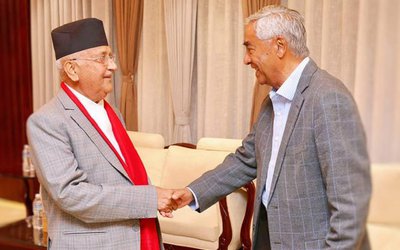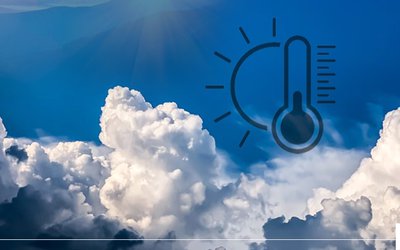
Indian Prime Minister Narendra Modi paid a two-day visit to Nepal on 11-12 May. No Indian prime minister had visited Nepal in an official capacity in almost two decades, until Prime Minister Modi, who has been to the country thrice in four years. This article considers the outcomes of the latest visit.
Decoding the Visit
In a break with tradition, Modi began his visit in Janakpur, the birth place of Sita. Janakpur is the temporary capital of province 2, where the Madhesi alliance of Rastriya Janta Party Nepal and Sanghiya Samajbadi Forum Nepal has formed the government. Modi’s desire to start his visit here, in the heartland of Madhes, raised suspicion in Kathmandu. Kathmandu feared that he might provoke the Madhesis by supporting their demands of constitutional amendment. Modi was in fact keen to visit Janakpur and Muktinath during his second visit to the country, but Kathmandu resisted on similar grounds, citing lack of safety for the visiting prime minister.
Analysts believe that there are several reasons behind Modi’s interest in beginning his visit in Janakpur. There is a sense of betrayal and disappointment with India among the Madhesis who believe that the country has given up on the Madhesi agenda and is not applying enough pressure on Kathmandu on the issue of costitutional amendment. India had withdrawn its support to the issue when welcoming Prime Minister KP Oli to India, ahead of his visit to China during his first tenure. Modi, this time around, likely wanted to suggest to Madhesis that India continues to stand with them. Modi’s visit could also help internationalise the Madhes issue by drawing more attention to it through the presence of Indian and international media.
Apart from Janaki Mandir in Janakpur, Modi visited Muktinath temple in Mustang and Pashupatinath temple in Kathmandu. Interestingly, the visit to Pashupatinath, who is seen as one of the forms of Lord Shiva, was on the day of the Karnataka polls. Karnataka has a significant population of Shiva devotees, and the priests at Pashupatinath all have Kannada roots. Hence, his visit to Pashupatinath could also have been aimed at Hindu voters in Karnataka.
Both prime ministers flagged off the inaugural direct bus service between Janakpur and Ayodhya to launch the Nepal-India Ramayana Circuit connecting Janakpur, the birthplace of Sita, with Ayodhya. India is developing 15 cities in India under the Ramayana Circuit: Ayodhya, Nandigram, Shringverpur and Chitrakoot in Uttar Pradesh; Chitrakoot in Madhya Pradesh; Sitamarhi, Buxar and Darbhanga in Bihar; Mahendragiri in Odisha; Jagdalpur in Chhattisgarh; Nashik and Nagpur in Maharashtra; Bhadrachalam in Telangana; Hampi in Karnataka; and Rameshwaram in Tamil Nadu.
Though the Nepalese Home Minister Ram Bahadur Thapa had stated that Modi’s visit to Nepal would be primarily religious and cultural in nature to boost religious tourism, both prime ministers also jointly laid the foundation stone for the 900 MW Arun-III hydro-electric project in Nepal. It is the largest hydropower project to be developed in Nepal and is expected to be completed within five years at the cost of about INR 60 billion. According to Nepal’s Investment Board, Nepal will receive INR 217 billion over 25 years from the project. The project developer will also provide 21.9 per cent of the energy free of cost, which is worth INR 97 billion, plus another INR 67 billion in royalties.
Outcomes
While the Madhesis were disappointed with India’s perceived betrayal, people from the hills still have not forgotten the bitter experience of the ‘economic blockade’ that had Indian support. However, Modi had a grand welcome in Madhes despite this disappointment. Although thousands participated in his civic reception in Janakpur, the same warmth was not witnessed in Kathmandu. Memories of the blockade haunted Modi’s visit in Kathmandu. Hashtags such as #BlockadeWasCrimeMrModi and #ModiNotWelcomed-InNepal were trending, with many demanded a public apology from Modi. Local police arrested CP Gajurel, senior leader of the Communist Party, along with several others of the Nepal Communist Party-Revolutionary for protesting against Modi’s visit to Nepal. Though the government of Nepal left no stone unturned to welcome Modi, the people were clearly not as welcoming. The few Nepali or Maithili words at the beginning of his speeches could not charm either Janakpur or Kathmandu, unlike during his first visit. In fact, Oli, who is seen as a nationalist, had to bear the brunt of criticism for inviting Modi to Nepal. Interestingly, the Nepali Congress, once accused of being “Indian agents” and “surrendering its sovereignty to the Indians” by the Communists, were also critical of Oli’s decision.
Way Forward
The Indian and the Nepalese prime ministers termed the visit “historic.” However, it is yet to be seen if the visit will have any real impact on bilateral relations. As per media reports, Modi has advised the Madhesis to unite and consolidate power and has assured them of Indian support. However, he refrained from publicly making any comment on the constitution or on the issues of Madhes.
In his efforts to improve relations with Nepal, Modi has has had two telephonic conversations with Oli, and has also sent his Minister of External Affairs Sushma Swaraj to Kathmandu to assure them of India’s support and eagerness to work with Oli’s government. At a time of India’s loosening grip on Nepal, Bhutan, and the Maldives, Modi has to do much more to show that his ‘neighborhood policy’ is on the right track.
Courtesy: eurasiareview.com















